STEAM Engines: Tornadoes and Vortexes, Oh My!
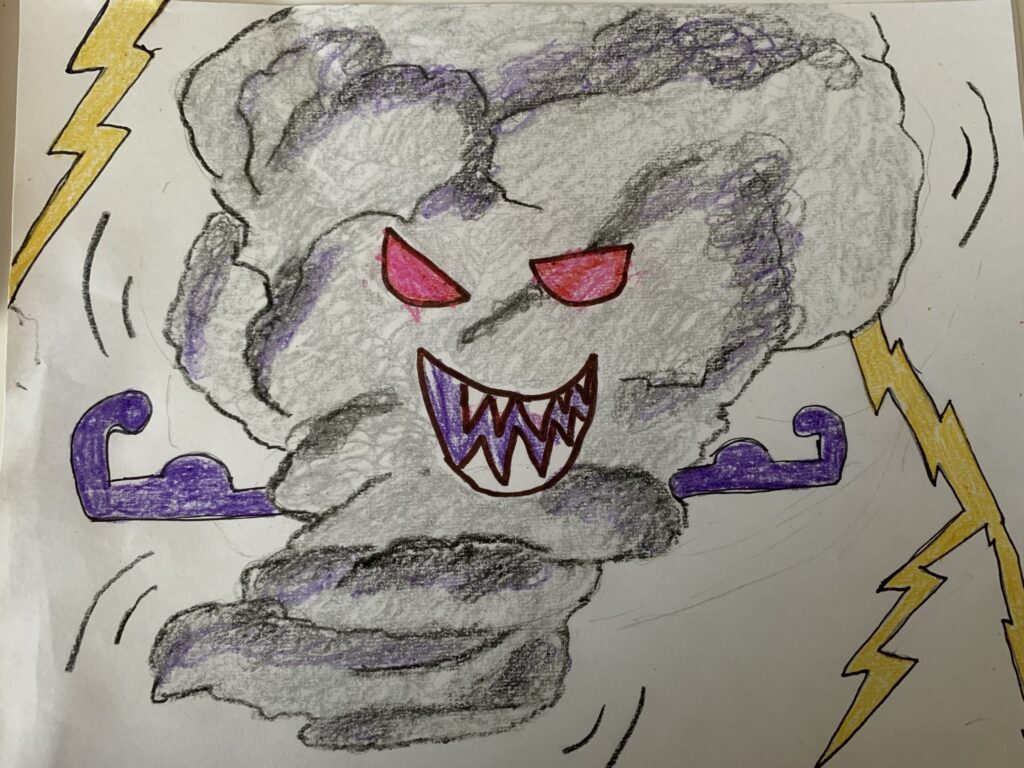
At our library, one of the topics that remains eternally popular is extreme weather. For myriad reasons: scientific curiosity, shock value, wonder, and fear among them, kids seek these books out constantly and regularly. In our house, fear and aw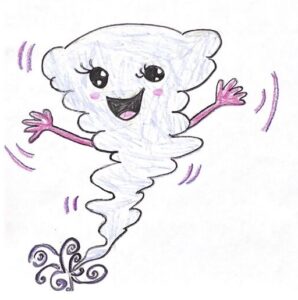 e were the major motivations behind their popularity. Never a fan of big storms, stories about tornadic events experienced by his dad whilst growing up on an Indiana farm set Desi’s anxiety aflame, and made even cloudy days uncomfortable. His (correct) point is that the way that the weather can seem to change on a dime – going from a breezy day to category five winds – is unpredictable and therefore scary. So what do we do when we’re scared? We arm ourselves with knowledge. We may not be able to control a tornado, but knowing more about it gives us some control over how we react to it.
e were the major motivations behind their popularity. Never a fan of big storms, stories about tornadic events experienced by his dad whilst growing up on an Indiana farm set Desi’s anxiety aflame, and made even cloudy days uncomfortable. His (correct) point is that the way that the weather can seem to change on a dime – going from a breezy day to category five winds – is unpredictable and therefore scary. So what do we do when we’re scared? We arm ourselves with knowledge. We may not be able to control a tornado, but knowing more about it gives us some control over how we react to it.
Because tornadoes were such an important topic in our house when Desi was younger, and we suspect that similar conversations might be happening in other households, we decided to make a video about it using some of the things that we learned.
We began by learning about the anatomy of a tornado:
Tornadoes be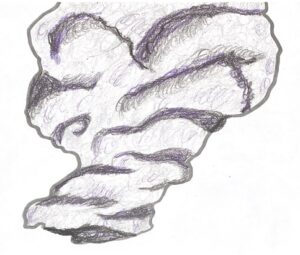 gin as rapidly rotating columns of air that form inside a specific type of storm known as a supercell. Typically they occur when cold air in the atmosphere is above a layer of warm, wet air. Warm air rises, and cold air is heavier than war
gin as rapidly rotating columns of air that form inside a specific type of storm known as a supercell. Typically they occur when cold air in the atmosphere is above a layer of warm, wet air. Warm air rises, and cold air is heavier than war
air, so they start swirling around and mayhem ensues. If the conditions inside that giant towering storm cloud are just right, the swirling air produces a vortex – a spinning funnel shape.
NASA’s Astronomy Picture of the Day has a stunning time-lapse video of some super cell thunder clouds doing what they do.
Once a funnel cloud touches the ground, it’s officially a tornado. The Enhanced Fujita (EF) scale is the tool used by scientists to determine its magnitude. 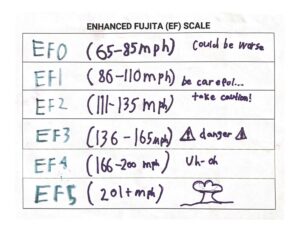
I will confess that prior to doing this research, I had a cautious, but fairly relaxed view about tornadoes. Upon spending some time getting to know the EF scale and looking at a lot of “after” photos, it occurred to me that my “knowledge is power” stance may have backfired on me. Desi and I spent some time looking at the tools that meteorologists use to predict tornadoes and keep us safe. The National Oceanic and Atmospheric Administration has some great information, including a super fun random fact generator! Fact: Lightning can heat the air to 50,000 degrees Fahrenheit — about 5 times hotter than the surface of the sun!
The weather specific arm of NOAA, weather.gov, is filled with interactive features like radar maps, satellite imagery, and if you enter your zip code, meteorologic reports specific to your area! You could easily spend an afternoon playing armchair weather scientist from the comfort of your own home.
Speaking of things you can do from your own home, NASA has an entire More to Explore Page built for weather-curious kids. With tons of articles, features, and projects, there’s definitely something for every jr. meteorologist or climatologist out there.
In wrapping up our own video, Desi, Haven, and I made our own vortex in a jar, and confirmed that we know the difference between a tornado watch (scientists are keeping an eye on it), and a tornado warning (time to move to a safe space). We learned a lot, and we have a lot of cool new resources to explore!
Vortex in a Jar:
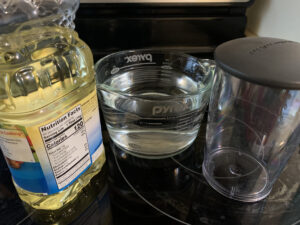 For this experiment you will need a jar or a 2 liter bottle from the recycling, some water, and some oil.
For this experiment you will need a jar or a 2 liter bottle from the recycling, some water, and some oil.
Fill your jar about ⅔ of the way up, then add about a quarter cup of oil to the top.
Seal it up, then spin! Once you’ve given it a good spinning, let it sit, and watch your little funnel cloud.
See if you can make it touch down!

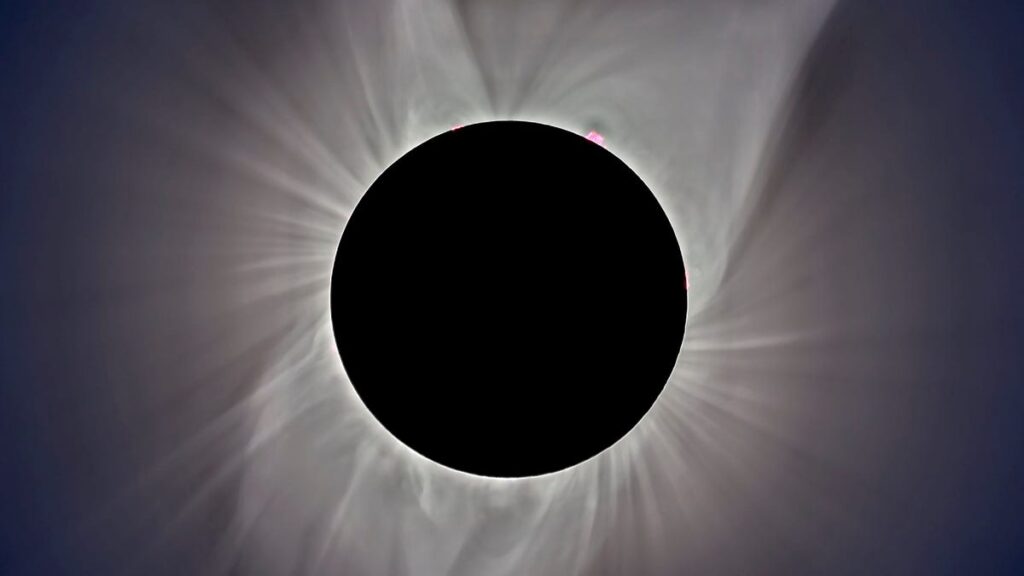

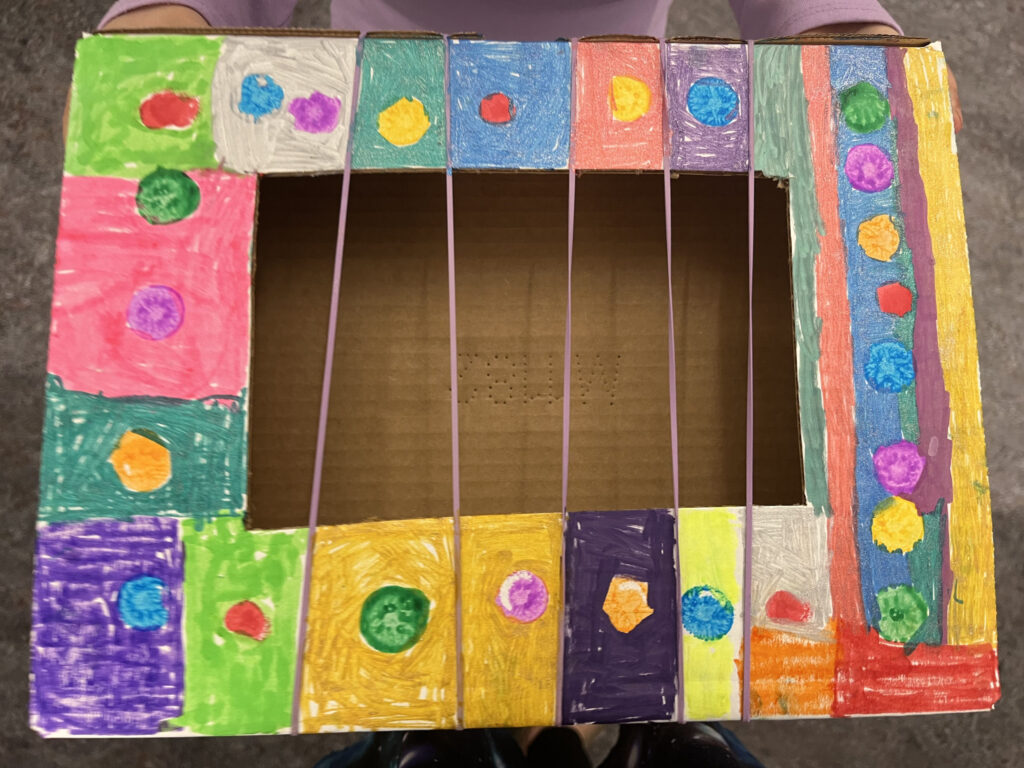

Responses